
24 Hour Emergency Services!
512.990.8600
- Ranked #1 on Google
- info@allstate-plumbing.com

512.990.8600
Home / Common Plumbing Problems
Our Services
Look, folks, let me tell you something about these dripping faucets, okay? It’s tremendous, really, how something seemingly small can turn into a big problem. So here’s the deal: picture a faucet, right? It’s just dripping away, drop after drop. And guess what? If it drips just once every second, that’s a whopping 86,400 drips in a single day. Unbelievable!
Now, get this – it takes around 15,140 drips to fill up a gallon. That’s right, a gallon! So, when you add it up, you’re looking at a staggering 5.7 gallons of water wasted every single day. And that’s not all – over a year, that’s over 2,000 gallons. Can you believe it? That’s like 8 tons of water, gone down the drain, right before your eyes. And remember, I’m talking about just one faucet here. If you’ve got a bunch of leaky faucets, well, the wastage multiplies big league.
But hey, that’s not the end of the story. We’ve got water meeting metal surfaces, and let me tell you, they’re not the best of friends. All that extra water – it’s like a red carpet for rust, making pipes and fixtures look bad. And what’s worse? More leaks! They might be sneaky, lurking around until it’s too late.

Now, water and wood? Don’t even get me started. Instead of rust, it’s rot that’s causing trouble. Damp, decaying wood – it’s like a breeding ground for mold, folks. And you know what that means? Health issues, big time. A combo of rot, rust, and mold – it’s like a disaster for your home’s strength and structure.
But don’t worry, there’s a fix. Fixing a dripping faucet can be as easy as swapping out those O-ring thingamajigs. It’s a piece of cake, really. But remember, different faucets, different fixes – it’s a whole deal.
So there you have it, folks. The story of dripping faucets, water wastage, and all the troubles that come with it. We’ve got the tools to tackle this – just need to use ’em. And let me tell you, we’re gonna make faucets great again!
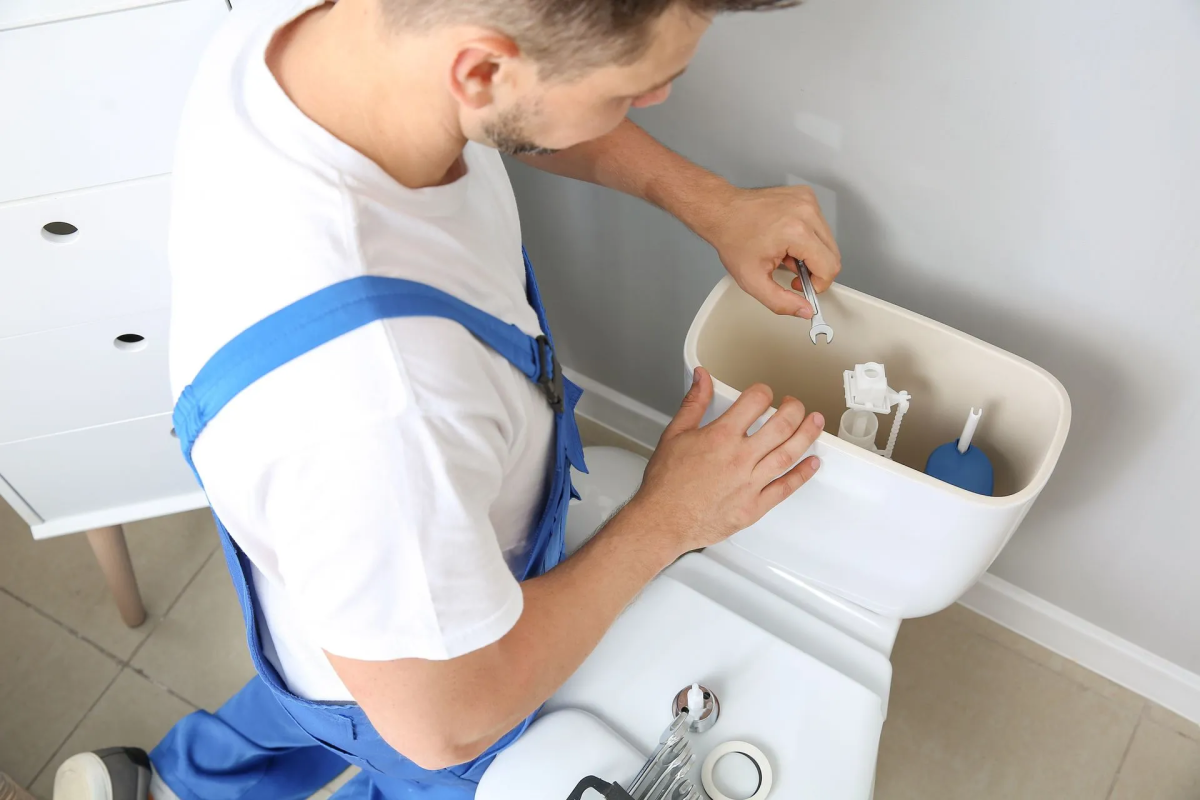
Let me tell you about this whole running toilet situation – it’s like a leaky faucet on steroids. I mean, how bad are we talking? It’s tremendous, folks. Imagine a small toilet – it’s just gushing out 20 to 30 gallons of water every single day. And get this, a medium-sized toilet? It’s even worse. But let me tell you, a running bidet takes the cake, wasting dozens of tons of water every month. Can you believe it? That’s a whole lot of water, folks. If your toilet is acting up and a couple of jiggles of the handle don’t do the trick, it’s time to pick up that phone and call a plumber. You’ve got to get that toilet back in line.
Now, let’s get to the nitty-gritty. It might just be a simple thing, like a flapper that’s doing some leaking. But make no mistake, even that’s wasting water, just not as much – still, a problem’s a problem, right?
Here’s where the real action comes in – the plumber. They’re the ones who’ll sort you out. Sometimes, the toilet’s acting all crazy, running for just a second or two, like it’s got a ghost pressing the flush button. But usually, it’s not some spooky thing, it’s a worn-out stopper causing the ruckus. And here’s the deal, folks – when you replace one thing in that toilet, do yourself a favor and replace everything inside it. You don’t want to be making two trips to the plumber in no time flat.
So there you have it, folks – the lowdown on the running toilet. It’s wasteful, it’s wild, but with a little help, we can get it back on track. And remember, when you fix one thing, fix it all. That’s just good business sense, believe me.
Let’s talk clogged toilets, folks. They’re a real hassle – overflow, bad smells, total mess. But it could also signal something worse: septic system damage.
Don’t panic though. Usually, a few strong plunges will do the trick. But when it’s serious, don’t hesitate to call a plumber. If water or sewage backs up all over, you’ve got a major issue.
Could be a blockage anywhere – from the septic tank to your pipes. That’s when you bring in a real expert – a professional plumber with heavy-duty tools. And remember, don’t treat your toilet like a trash can. Stick to No. 1, No. 2, and toilet paper. Keep things flowing smoothly, folks.


Folks, slow drains – let’s talk about it. People often call up the plumbing pros for this issue. You know what? It’s a lot like clogged toilets. Who knows what’s getting stuck in those pipes? Like with toilets, don’t toss things down that drain that’ll clog it up. And let me tell you, trying to plunge a sink – it’s not a good move, it’s unsanitary.
Now, these slow drains, sometimes a drain cleaner will do the trick. But often, you gotta call in the experts. The real trouble? Those clogs hide behind walls, folks. Yeah, pipes are tucked away, and you might need a little “digging” to reach them. It’s tricky – these pipes wind around important parts of your home, and even the best expert can have a tough time dealing with them.
Folks, let’s talk water heater issues – it’s a big deal. You might need a plumber, a natural-gas pro, an electrician, or all three. Common problems include valves giving way, leading to flooding, or rust messing with water flow. You can even get smelly water from bacterial invasions. But the most common? A water heater not living up to its name – no hot water or too little.
If it’s the latter, it might be easy like relighting the gas pilot or swapping out an electric heating element. Corrosion or sediment? In hard water areas, they’re trouble – an expert’s needed to clean the tank. Now, a leaking heater? No repairs, folks. It’s done for. You’ve got to replace it.
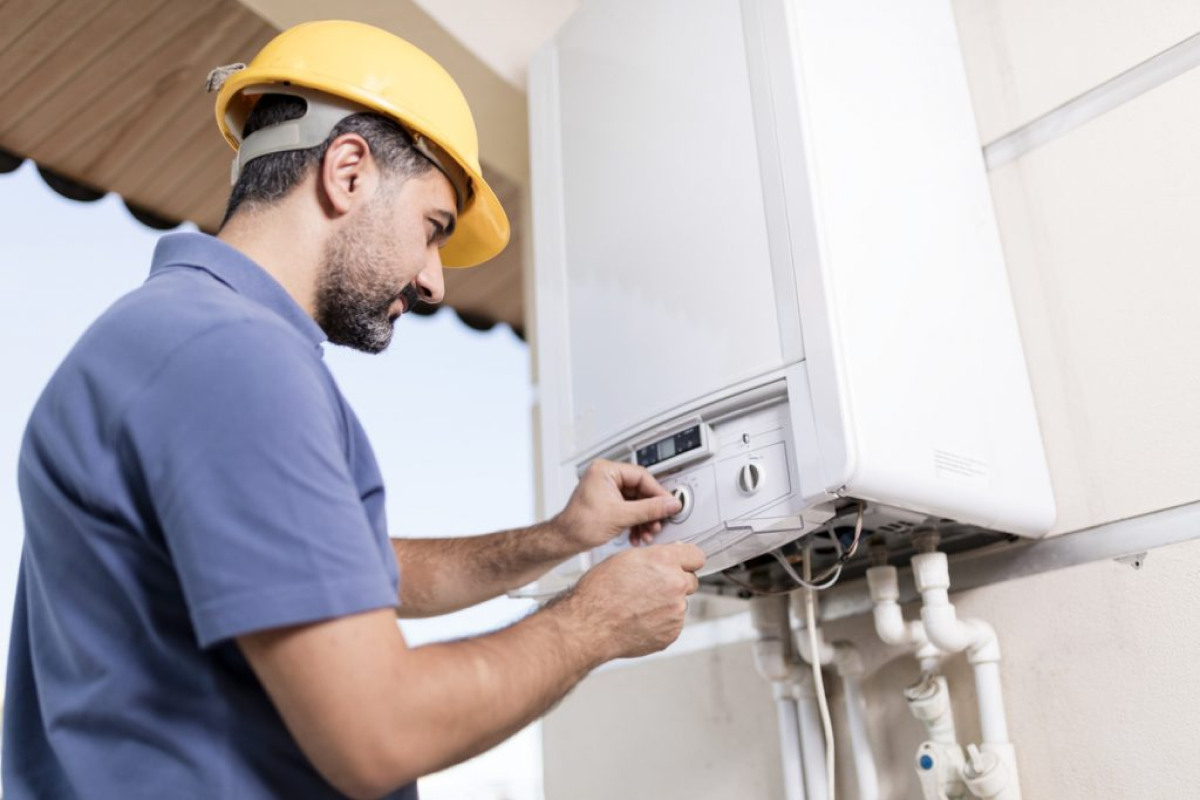

Folks, let’s talk leaky pipes – that’s often the first reason folks pick up the phone for a plumber. It could be a toilet pipe, sink pipe, you name it. But here’s the thing – just like dripping faucets, these leaks waste a ton of water and wreck your home. Water’s no friend to wood, rusts metal, and becomes a breeding spot for nasty bacteria and disease-carrying insects.
Now, leaky pipes and fixtures, they might need a change. Even the best stuff wears out, no denying that. If it’s a fixture, it could be so old that parts are extinct – time for a replacement. Pipes, whether metal or PVC, they’re easier to switch out than a whole system. A pro plumber’s your go-to here. They’ll guide you right, whether it’s a pipe under the sink or a near-gusher hiding in your walls.
Low water pressure – a real headache, even outside of the shower. It might be the utility’s fault – easily checked with a pressure gauge. Or, it could be a hiccup within your own home. Maybe you’re multitasking too much, like running the dishwasher while watering the lawn, and your shower’s feeling left out. Blocked pipes might be the villain too.
Now, here’s the deal: check different spots, one by one, to see if it’s a house-wide problem. Also, take a peek at that water valve – maybe it’s not wide open. Run each faucet, each showerhead, and make a note of those with low pressure. If it’s just one spot, that fixture or pipes might be clogged. But if the whole house feels it, there’s an issue with one or more main pipes.
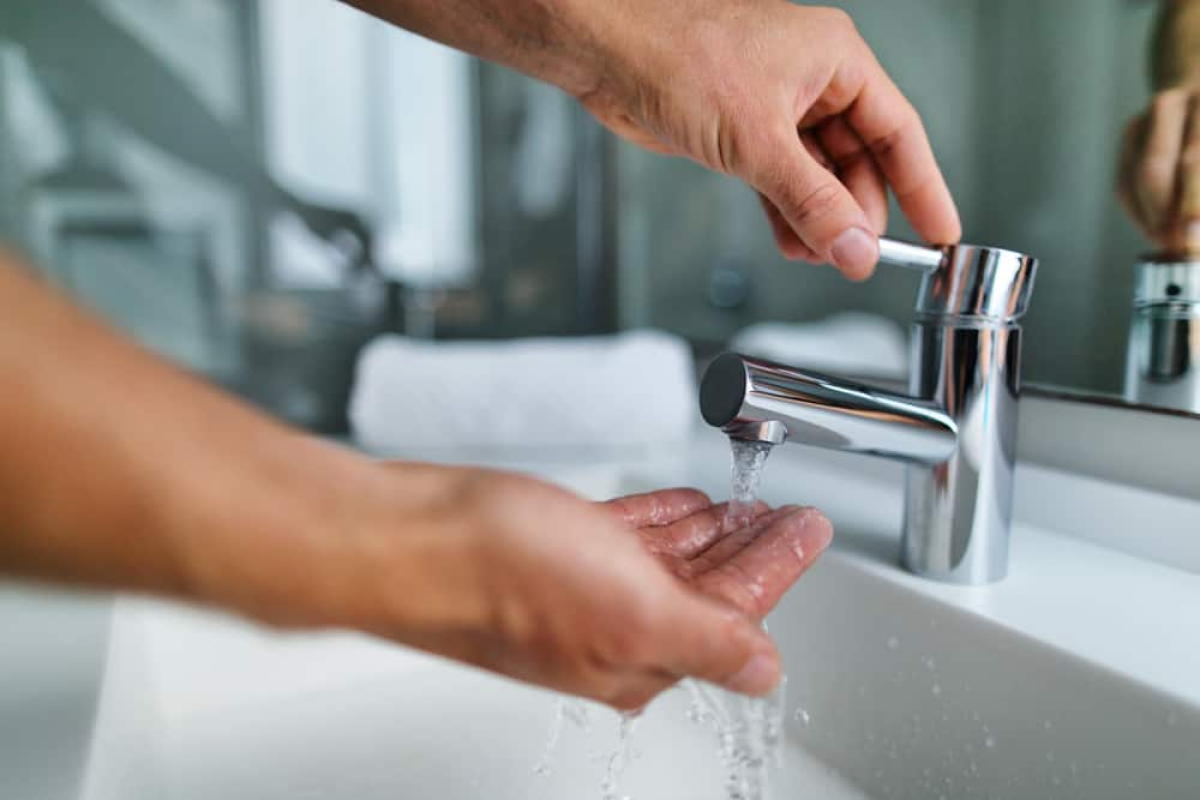

Let’s break it down – there are two types of water main breaks. First, the public delivery line itself can snap. Second, the line bringing water from the public main to your home can break.
Now, if it’s the first kind, not your problem. The city’s got to handle that. But for the second, it’s on you. These breaks, they’re like a showstopper – both awe-inspiring and nerve-wracking. Fixing them? Major work, big equipment, often tearing up your property. And let’s be clear, you need top-notch pros for this, no DIY stuff.
Water main leaks? Only a bit less serious – but they need quick attention. Left alone, they can evolve into full-blown breaks. And guess what? Yep, heavy gear and digging are needed here too
At Allstate Plumbing, we specialize in all forms of plumbing services, but what sets us apart from the competition is our expertise in sewer line issues. Our team of experienced and knowledgeable technicians are highly trained to tackle any problem you may have, from clogged drains, to broken pipes. We take great pride in providing top-notch services and solutions for all of our customers.
We understand that sewer line issues can be a major headache, which is why we are dedicated to getting the job done quickly and efficiently. With Allstate Plumbing, you can expect quality services and solutions that you can trust.


Let’s dive into sudden water bill hikes – they can stem from various causes. Just a drip per second from one faucet can hit nearly 6 gallons daily. A family of four normally uses around 200 gallons daily. But over a month, that’s 6,180 gallons, not 6,000 – and those 180 extras stack up. Weather plays a role too; dry spells make you water your lawn more. And don’t forget, more folks at home means more water used.
Now, your utility might estimate your bill based on past use. If their guess is too low, you’ll see a sudden spike when they catch up. Installing water-saving gear can help rein in a rising bill or cut a constant one. Plus, saving water’s good for the environment.
Let’s get into downspouts, folks – they’re a real game-changer. They can mess things up above and below ground. If they break or disconnect, water sneaks around your foundation. That means damp walls and foundation issues below ground. Sweating walls and seeping foundation? Well, get ready for a wet basement.
And that’s not all – clogged downspouts overflow into your gutters. Overflowing gutters? That’s a one-way ticket to a soggy basement. And it doesn’t stop there – the wood they’re hooked to, the soffits, fascia, and shingles near the overflow point all suffer. So, even if you clean your gutters, ignore your downspouts and you might just wave goodbye to those gutters hanging on your home.
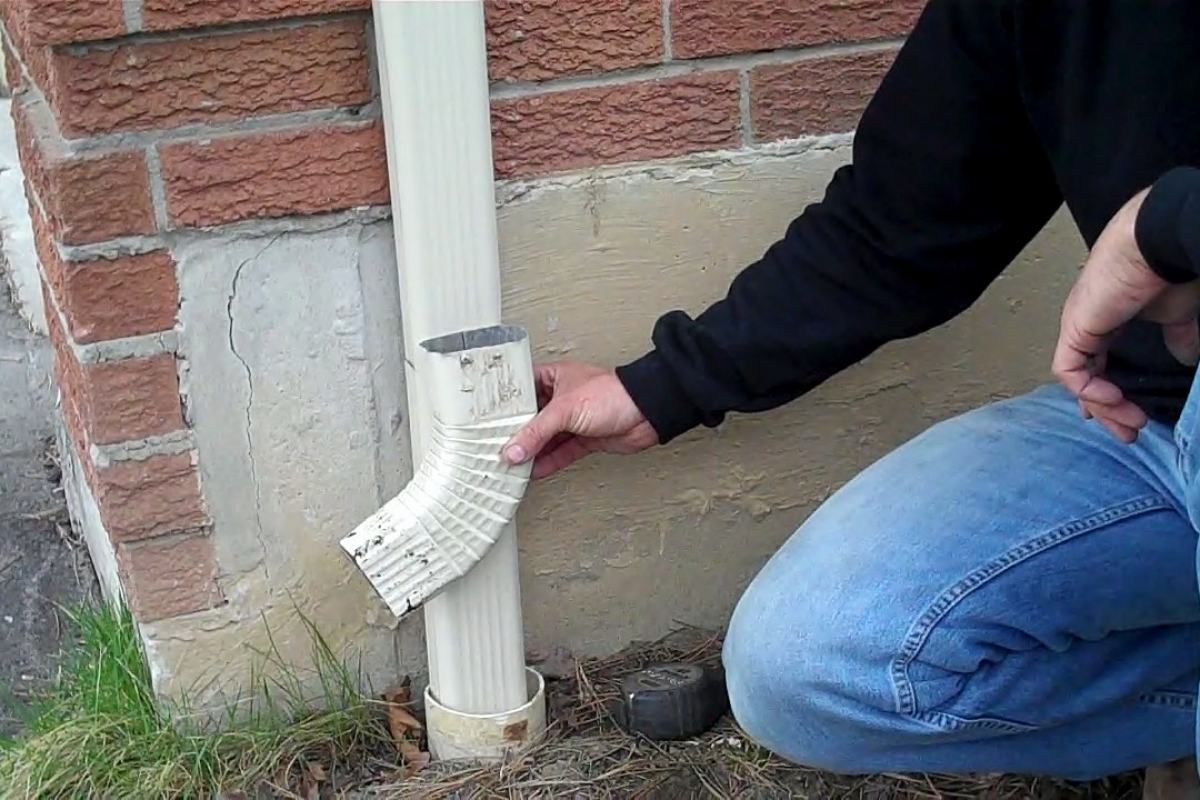

Let’s talk wet spots and standing water on your lawn – it could be no biggie or a big deal. Small grading hitches might create puddles, usually not too bad unless the slope’s toward your house – then you’ve got troubles, similar to bad downspouts. But there’s the major league stuff too – leaky septic systems, busted sewer mains, or even water main leaks. All need instant attention to avoid turning into full-blown catastrophes.
Some standing-water issues? Easy fix – a bit of dirt, some fresh sod. Others? They’re heavy-duty jobs, need a backhoe, a squad of top-notch plumbers, and, let’s be real, a bunch of cash. Get your property checked once in a while – prevent any surprise disasters.
Ladies and gentlemen, let’s dive into a topic that’s not just about protection, it’s about securing your home’s foundation. We’re talking about the dynamic duo of poor downspouts and those wet spots on your lawn. These culprits, they’re not just causing a soggy mess, they’re causing foundational problems. But fear not, because I’ve got a winning strategy to safeguard your fortress.
Here’s the deal – installing drainage tile is the smart move. It guides the overflowing water away from your home, preserving that all-important foundation. We’re talking about a powerhouse solution, folks.
But let me tell you, when those gutters overflow in cold weather, it’s a whole new ballgame. Once that rain freezes, it’s like Mother Nature’s hitting your gutters with a sledgehammer. The result? Gutters ripped off the house, roof damage, and repairs that you wouldn’t wish on your worst enemy.
Here’s what you need to do – keep those gutters pristine. No debris, no nonsense. People are even using wire mesh to keep out those pesky twigs and leaves. You want those gutters flowing like a river, not getting clogged and overflowing.
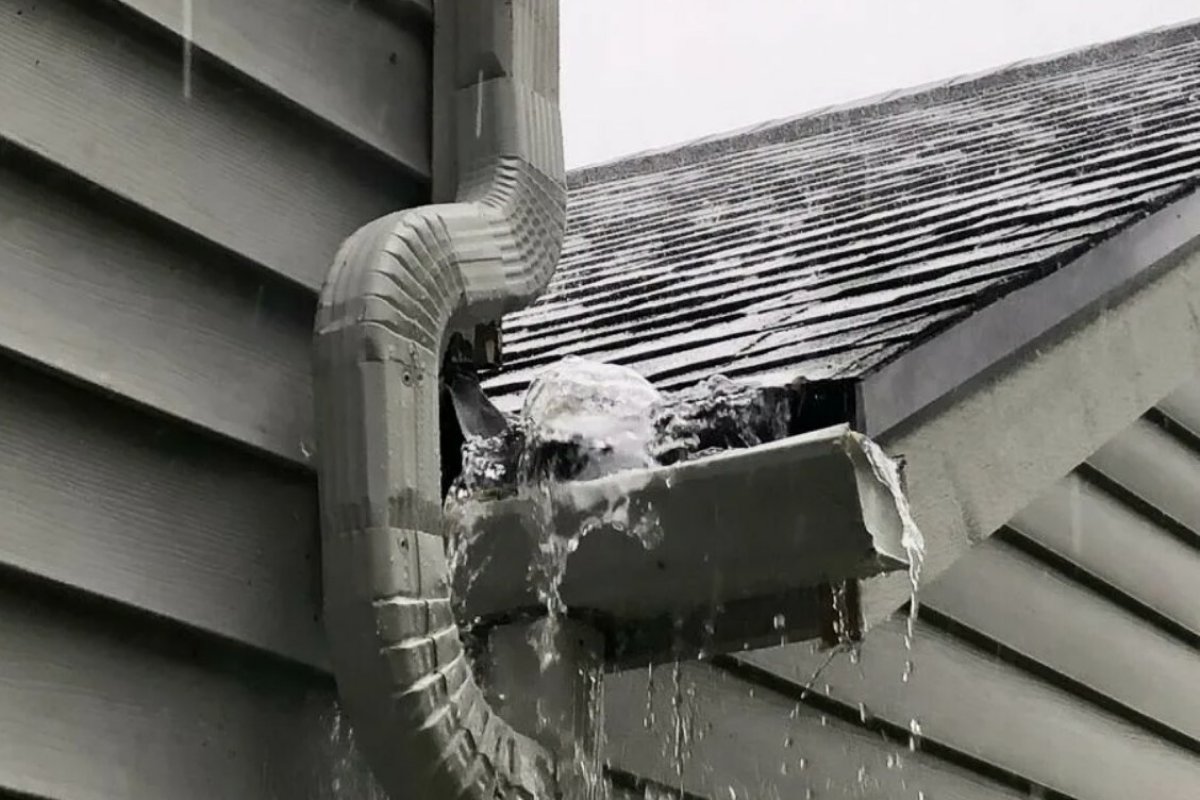
But hold on, if your gutters are clean and still causing a splash, you might be facing a gradient glitch. The angles might be off, and that’s a problem. That’s when you need to take action – realign those gutters, get them back on track.
So, my friends, don’t just wait for problems to hit you like a ton of bricks. Be proactive, be smart, and let’s make your home stand strong against anything that comes its way. Protect that foundation, protect your investment – it’s not just about gutters, it’s about your castle’s future.

Water stains lurking in your basement? These aren’t just leftovers from a flood or water disaster. Oh no, they’re like a calling card from mold and mildew, nasty stuff that not only stinks up the place but also puts your health at risk. It’s a double whammy, believe me. And these stains? They’re more than just an eyesore. They’re a hint of trouble – both for how your place looks and how it’s built. Take one overflowing gutter, for instance. That water seeping in can destroy your fresh drywall like it’s nobody’s business. Now, when these stains spread far and wide, it’s time to get strategic. Replacing the stained stuff is just step one. You’ve got to be smart and assess the bigger picture. Check what those stains were attached to – like the joists behind that drywall. Wood rot and rust might be lurking, and trust me, that’s not what you want. So, let’s not just sweep this under the rug. Be proactive, address those stains, and safeguard your home from the inside out. Don’t let water stains play havoc with your space – let’s keep your home dry, safe, and looking its best.
Let’s get into attics – usually, they’re not hiding plumbing, but there are exceptions. And here’s the twist, any attic behind a wall affected by overflowing gutters or clogged downspouts? It could spell trouble with mold and mildew. Attics are drier, you see, which means water damage might fly under the radar, especially behind those added walls. It’s a situation that needs an expert eye, believe me. But wait, there’s more – mildew might be a pesky annoyance, but mold? That’s a different ballgame. Inhaling mold spores? It’s not just a concern, it can be downright dangerous. That’s why you need a mold pro – they’ve got the expertise to guide you right. So here’s the deal – if your attic’s had a rendezvous with water woes, don’t take chances. Bring in a pro, assess the damage, and secure your space. Whether it’s mildew being a pest or mold turning deadly, let’s face it head-on and make your attic a safe, clean haven once more.

Let’s talk emergencies – and no need to hit the panic button just yet. If you can, figure out what caused the chaos. Use towels, sheets, whatever you’ve got to contain that water. But here’s the key move – call in the expert plumbing professionals. When an emergency strikes, time’s your ally. Waiting? Not an option. Get those pros on the line, and let’s put that emergency in its place. Call us! 512-990-8600
Allstate Plumbing Heat & Air
16800 Radholme Ct., Suite C,
Round Rock TX, 78664 RMP# 40499
TACLA# 117912E